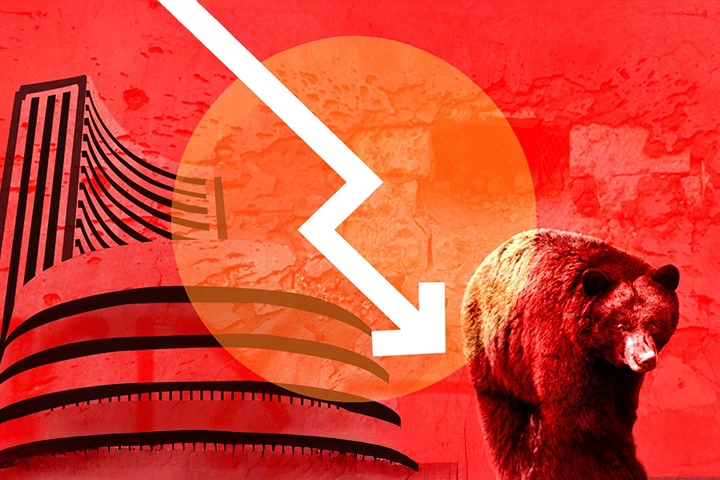The Indian stock market continues its downward spiral, with the Sensex and Nifty recording significant losses over the past four sessions. On Thursday, December 19, market benchmarks nosedived, causing investors to lose nearly ₹13 lakh crore in total market capitalisation during this period. What are the key reasons behind this sharp selloff, and how is it impacting investors? Let’s break it down.
A Tough Day for Markets
The Sensex plunged nearly 1,200 points during early trade on Thursday, hitting a low of 79,020.08 before paring some losses. Similarly, the Nifty 50 slipped by 329 points to 23,870.30. By 1:05 PM, the Sensex was down 891 points, or 1.11%, at 79,291, while the Nifty 50 fell 231 points, or 0.95%, to 23,968.
This downturn slashed the overall market capitalisation of BSE-listed firms to ₹446.5 lakh crore, down from ₹452.6 lakh crore in the previous session. Investors have seen ₹6 lakh crore wiped out in just a few minutes of trading, adding to the ₹13 lakh crore lost over the last four days.
What’s Dragging the Market Down?
Here are the five critical factors driving the selloff in the Indian stock market:
1. US Fed’s Rate Cut Outlook
The US Federal Reserve recently cut its benchmark interest rate by 25 basis points, bringing it to 4.25%-4.50%. However, its cautious outlook on future rate cuts sent shockwaves through global markets.
“The Fed’s indication of only two 25 bp cuts in 2025, as opposed to market expectations of three or four cuts, spooked investors,” said V K Vijayakumar, Chief Investment Strategist at Geojit Financial Services. Major global markets, including the S&P 500 and Nasdaq, tumbled by 3%, while the dollar surged to a two-year high.
2. Foreign Institutional Investor (FII) Outflows
FIIs have sold over ₹8,000 crore worth of Indian equities in just three trading sessions. This selling pressure, coupled with a stronger dollar and higher bond yields, has added to the market’s woes. While domestic institutional investors (DIIs) have been buying, it hasn’t been enough to offset the FII outflows.
3. Rupee Weakness
The Indian rupee hit a historic low of 85.3 per dollar on Thursday, further denting market sentiment.
A weaker rupee discourages foreign investments, as returns are diminished when converted back into stronger home currencies. Additionally, higher inflation due to costlier imports often leads to tighter monetary policies, which can negatively impact market performance.
4. Macroeconomic Challenges
India’s trade deficit widened to a record $37.84 billion in November, compared to $21.31 billion in November 2023. Slowing GDP growth—Q2 growth was the weakest in nearly two years—has also raised concerns about the economy’s health.
5. Uncertainty Over Earnings Recovery
Corporate earnings for Q1 and Q2 of this fiscal year have been underwhelming, raising doubts about a swift recovery. Experts believe meaningful improvement might not come until Q4.
“Unless we see a sharp recovery in earnings, which is not visible yet, the market’s performance in CY25 might remain muted,” said Santosh Kumar Singh, Fund Manager at Motilal Oswal Mutual Fund.
Investor Sentiment and Outlook
The cascading effect of these factors has eroded investor confidence. While domestic investors are cautiously optimistic, global cues and macroeconomic pressures are keeping the market volatile.
Market watchers suggest that the upcoming Q3 earnings season and potential policy changes from the US Fed could play a critical role in stabilizing the markets. Until then, both retail and institutional investors may need to tread carefully.
Conclusion
The Indian stock market is grappling with multiple headwinds, from global economic uncertainties to domestic macroeconomic challenges. With significant losses already incurred, all eyes are now on the December quarter results and global market trends.
Will these challenges ease in the coming months, or is the market poised for more turbulence? Only time will tell.
CTA: Stay tuned for the latest updates on market trends and analysis to navigate this volatility effectively!

